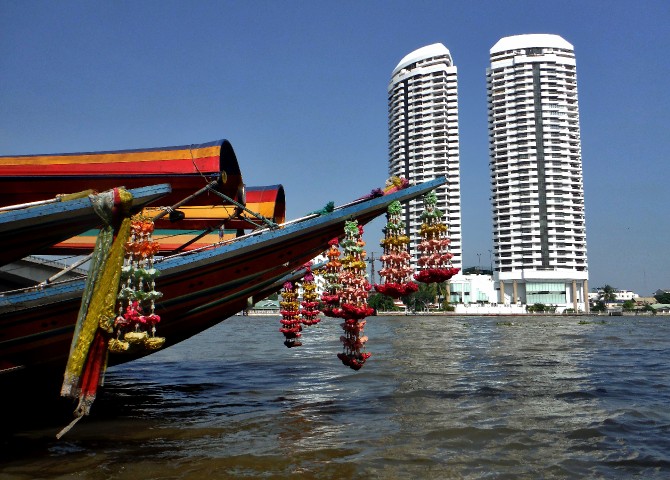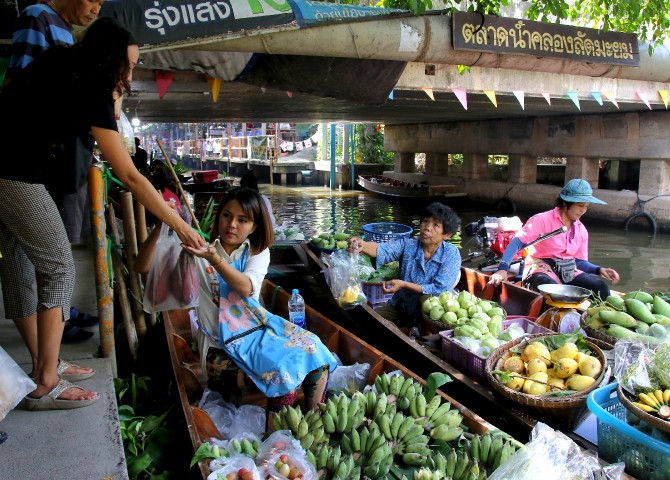CHAO PHRAYA RIVER (Thai: แม่น้ำเจ้าพระยา, Maenam Chao Phraya),Bankok, Thailand |
||
 |
||
Barge pulling backhoe. Photo by Derek Irland |
||
————————————————————————————————— This essay was originally posted to National Geographic's Water Currents blog on March 2, 2015. —————————————————————————————————
Here in the heart of busy, bustling, Bangkok, I am an urban working river with constant traffic of long heavily laden cargo barges pulled by tug-boats chugging slowly upriver. Speedy water taxies (known as longtails) zip across my spine from dock to dock. Wooden sampans speak of days gone by. Every day jam-packed ferries transport thousands of passengers including school children, commuters, monks, visitors, and families. |
||
 |
||
Old and new contrast on the river. |
||
Along my banks I witness ritzy hotels with tourists getting foot massages by the swimming pool. New high-rise buildings stand next to rickety old wooden warehouses. Saffron-robed monks sit in prayer at enormous temples glittering with gold leaf. I have a close-up view of the multi-colored tile-covered spire (prang) of Wat Arun (Temple of Dawn) located on my west bank.
I feed a system of canals (khlongs), which reflect a more traditional Siam, a less-hurried way of life. Coconuts, rice, noodles, and bananas are sold from floating kitchens. Laundry drying in the sun hangs out from wooden shacks over the water, children bathing below. Frail men and women haul in catfish. And my canals fan out to irrigate numerous rice paddies. |
||
 |
||
Produce sold from floating market. Photo by Derek Irland |
||
 |
 |
|||
Catfish up close and personal. Photo by Derek Irland |
Floating market with catfish in foreground. Photo by Derek Irland |
|||
My tidal flow is evident by the islands of hyacinth either floating upstream or down depending on the tide. On many rivers around the world water hyacinth (Eichhornia crassipes) is a problematic invasive weed that can impact flow and degrade my quality. This plant consumes oxygen, thereby killing aquatic life, and stops sunlight from getting to native water plants. The rapid-growing hyacinth also provides a breeding ground for mosquitos and a snail that is host to parasites, which can cause the water-borne disease, schistosomiasis, in both animals and humans. In an attempt to be pro-active, efforts are being made in Bangkok to use the hyacinth as a natural form of wastewater treatment, which is a way to begin to clean up the parts of me that get polluted through human and industrial waste. Also, this plant is now being recycled into the form of baskets, furniture and flip-flops. |
||
 |
||
Floating hyacinth and plastic. |
||
A quieter atmosphere settles in as nighttime arrives. There is less traffic and slower boats ply tourists along under canopies of lanterns. Lights are also reflected on my surface from bridges and buildings as I move toward the Gulf of Thailand to join the sea, my journey of 231 miles (372 km) ending. |
||
next page: Ping River >
< previous page: Siem Reap River




































